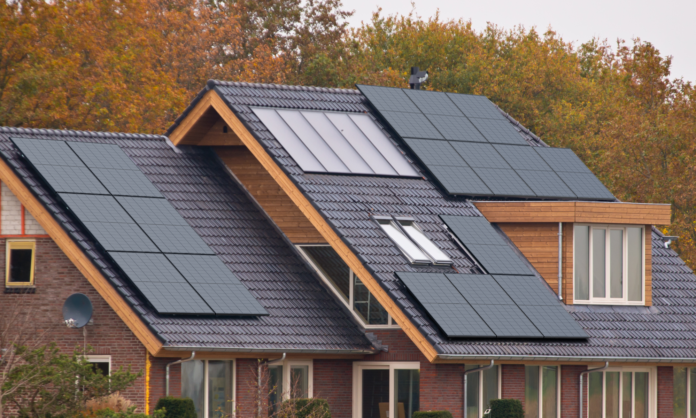Introduction
In the quest for a sustainable future, the dialogue between renewable and non-renewable energy sources has never been more critical. This discourse is not just about choosing the greener alternative but understanding the core differences that set these two apart. From the sunlit expanses of solar farms to the deep, ancient reserves of fossil fuels, this article embarks on a comprehensive journey to explore the essence and impact of both energy types.
What is Renewable Energy?
Renewable energy is derived from natural processes that are continuously replenished. This category includes solar, wind, hydro, and geothermal power, which leverage the Earth’s infinite resources to generate electricity. The benefits of renewable energy are manifold, promising a cleaner, more efficient future. Innovations like Solar Generators illustrate the sector’s strides toward enhancing renewable energy’s efficiency and accessibility.
What is Non-Renewable Energy?
In contrast, non-renewable energy sources, such as coal, fossil fuels, and natural gas, are finite. These resources, formed from the decomposed remains of prehistoric organisms, have fueled human progress for centuries. However, their extraction and use entail significant environmental drawbacks, including emissions that contribute to air and water pollution and global warming. The transition to sustainable alternatives underscores the necessity of grasping non-renewable resources’ limitations and ecological impacts.
Comparing Efficiency and Sustainability
The sustainability and efficiency of energy sources are pivotal in their impact on our environment and future energy policies. Solar panels and wind turbines represent the pinnacle of renewable energy’s promise, offering a glimpse into a future powered by clean, inexhaustible resources. Solar panels, in particular, stand out for their ability to convert sunlight directly into electricity, showcasing remarkable efficiency improvements over the years.
In contrast, the finite nature of non-renewable resources such as coal and natural gas poses challenges to their long-term viability and sustainability. As these resources diminish, the energy sector must pivot towards more sustainable solutions to meet global demand.

Environmental Impact
The transition to renewable energy is crucial for reducing global greenhouse gas emissions. Solar panels and other renewable technologies offer a pathway to drastically cut carbon footprints and combat climate change. These technologies, including solar generators, are key to transitioning away from fossil fuels and reducing the environmental degradation associated with non-renewable energy production.
On the other hand, the environmental impact of non-renewable energy sources remains a significant concern. The extraction and burning of fossil fuels are leading contributors to air pollution, water contamination, and the greenhouse effect.
Economic Considerations
The economic dynamics of renewable vs non-renewable energy are evolving. While renewable energy technologies like solar panels and wind turbines were once considered costly, their prices have decreased substantially, making them increasingly competitive with traditional energy sources. This shift is not only due to technological advancements but also to the growing recognition of the environmental and health costs associated with non-renewable energy.
As we move forward, the economic benefits of renewable energy, from job creation to energy independence, make a compelling case for its adoption. The transition to renewables represents not just an environmental imperative but a significant economic opportunity for nations worldwide.
Global Trends and Future Outlook
The global energy landscape is undergoing a significant transformation, with renewable energy at the forefront of this change. The increasing adoption of renewable energy systems reflects a broader shift towards sustainable energy sources, driven by both technological advancements and a growing awareness of environmental issues. This shift indicates a promising future for renewable energy, as countries and corporations alike commit to reducing carbon emissions and investing in green energy solutions.
However, the transition to a renewable energy future is not without its challenges. The variability of sources like solar and wind requires innovative solutions for energy storage and grid management to ensure a reliable power supply. Furthermore, the scaling of renewable energy infrastructure must be accelerated to meet the urgent demands of climate change mitigation.

Challenges Facing Renewable Energy
Despite the optimistic outlook, renewable energy faces several obstacles. Infrastructure and regulatory frameworks still largely favor traditional energy sources, posing challenges for integrating renewables into existing grids. Moreover, the initial costs and resource requirements for setting up renewable energy systems can be substantial, necessitating continued investment and policy support to make them accessible on a larger scale.
Non-Renewable Energy’s Last Stand
The reliance on non-renewable energy is increasingly seen as unsustainable in the long term. While non-renewables currently play a significant role in the global energy mix, their environmental and economic costs are prompting a reevaluation of their use. The depletion of fossil fuel resources and the pressing need to address climate change are accelerating the transition to renewable sources, highlighting the importance of advancing sustainable technologies. For a deeper understanding of renewable energy, readers are encouraged to consult resources such as the International Renewable Energy Agency (IRENA) or the U.S. Energy Information Administration (EIA) for comprehensive insights.
Conclusion
The comparison between renewable and non-renewable energy underscores the critical choice facing our global society: continue down the path of environmental degradation or embrace a cleaner, sustainable energy future. The adoption of renewable technologies represents a key step in this transition, offering a path towards reducing greenhouse gas emissions and promoting energy independence. As we look towards the future, the role of renewable energy in shaping a sustainable world cannot be overstated, marking a pivotal moment in our journey towards environmental stewardship and economic resilience.
